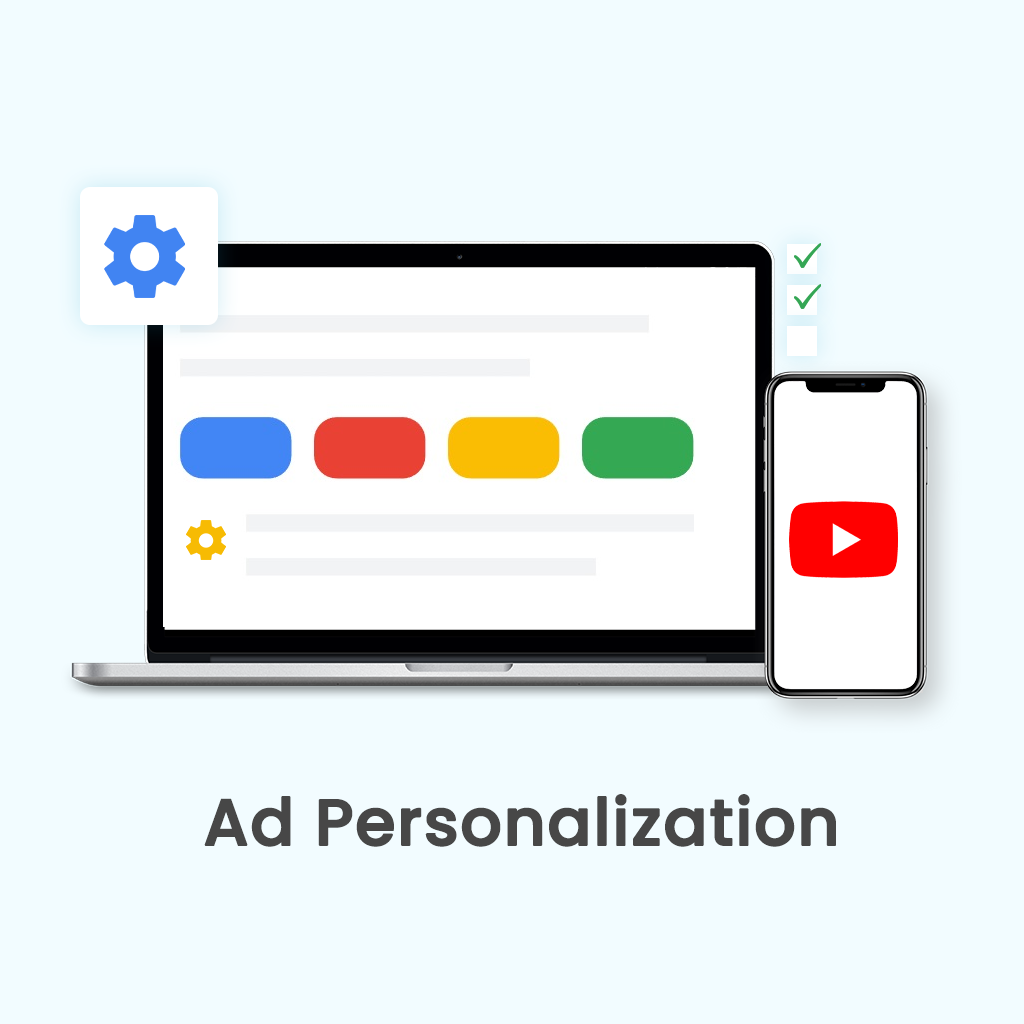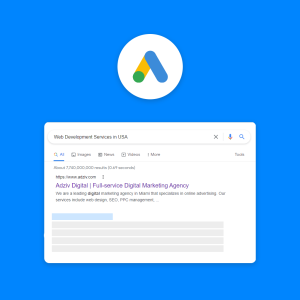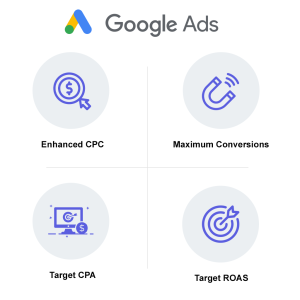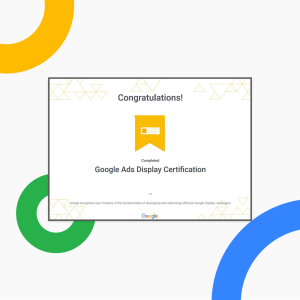Table of Content
Do you want to learn Google Ads? The first thing is to know its setup. How to set up Google Ads? We’ve got you covered with some easy steps to set up an account in this discussion. First of all, a user must also be aware of the Google ad setting process by knowing the basics. If you aren’t familiar with the basics of setting Google ads, you can’t target leads in your comfort zone.
Targeting leads is the utmost target of every business group or individual who runs Google ads. Being an owner and front-line manager, you are always concerned about the results. How do you grab conversions to make your business successful? You have to learn the process of running an ad to drive results.
It’s your right to get the attention of visitors by creating ads on search engines. Google seems to be the right platform for this type of activity. It can multiply your conversion rate and boost sales in a quick time. Every entrepreneur or enterprise owner should learn some basic things regarding Google ads setup. Here are the steps to launch Google Ads!
Get Grip over Basic Terms before Setting up Google Ads
If you want to set up Google ads, just start with clearing basic concepts. You need to know the ABC of Google Ads before you reach the activation stage through settings and its final setup. Here are some key learning factors that you can’t skip!
Keywords
For every digital marketing service, keywords play a highly essential role to make campaigns active. It is a phrase that users type to do research for their products. Subsequently, an advertiser has to make good use of phrases to make accurate and right searches. Every marketing specialist has to play with the mind of customers before finding keywords.
After finalizing keywords, the actual thing begins when an advertiser does everything to make the ad appear on Google searches. The entire process is paid, but keyword research comes under the expertise and supervision of an advertiser. Every campaign setup needs the right keywords to make a difference. You can’t deny this at all!
Bid
If you have done keyword research, the next is to plan to bid to improve the appearance of your ads. Bidding is a process of getting maximum clicks by bidding amount to generate good clicks. It is the amount you pay to get decent clicks on the ads. Further, you find good clicks when people visit your website due to the Google Ads setup.
Quality Score
Quality score is also a key term that one should consider important when running ads. It is about keywords relevancy to meet the standard of the ads. In this process, you get to know about the keywords that are relevant and according to the instructions of your landing page. It is a page where your visitors land, such as a website’s web page.
One has to maintain a quality score through Google ads operations just to improve the bid cost and ad rankings. Indeed, it is a basic term that you can’t deny while handling and monitoring ads.
Ad Ranking
Do you ignore Google ads ranking? There is no way to ignore the ranking when you are in the middle of an ad campaign. How do you improve the ranking of your ads? You improve the rankings when you take good care of bids, quality score, and accurate keyword researching. These are the factors that boost ad rankings to make them visible to your visitors.
CPC
CPC is better known as cost per click. It is the amount you pay to get clicks on the ads. You don’t set up the total budget on an entire bid, but you set the budget to get the maximum cost per click. The literal meaning of CPC is the amount you pay against the clicks you get on your ads. It is the basic term that should be understood by the owners who are interested in running Google ads.
Conversion
Conversion is the most common word often repeated in the digital marketing world. It is the success of a business. Conversion is your lead that takes further action after clicking on your ads. Further action may be signing up for your newsletter, doing a purchase, or making a call to know details about your products and services. No doubt, you force visitors to take necessary actions after they click on the ads.
Set Your Account
If you have got ideas around basic things, the next step is to organize the Google Ads account. It is the stage when you set your account by making the proper categories of your products and services. You may set up multiple ad groups including higher and lower levels. Therefore, you have the control to make sets of your products by making ad groups. The more you make categories, the more it becomes easier to handle the accounts.
Setting an account is an essential stage for advertisers, especially when it comes to general settings and considering the ad extensions. If we overview general settings, the first thing is to set up the name for the campaign. Hence, you give the name to your advertising campaign to start things nicely.
After you select an appropriate name, the next thing is to choose a network for better display and appearance of the ads. No matter if you are interested in a display or search network campaign, you have to choose a network after setting up the name.
With this, you can easily target the audience along with the locations. Hence, you mention the interests of people along with their target locations and areas. It helps to make the segments of the target market along with the support of languages. You can set languages as per the convenience of the target market.
By doing this, you can categorize your campaigns with respect to ad groups, keywords, and products that you want to advertise. Focus keywords also boost your ads, so it is a great chance to drive an audience when you target focus keywords through Google ads.
Decide Your Budget
Once you have set your ad, the job is not over yet. The budget is yet to be decided to make your ad run well. Google ads need proper allocation of budget to manage bids. Budget is what you spend to get clicks and impressions on your ads. Furthermore, you set your bids to spend on the keywords to enhance the ad searching.
Budget planning is a must that you can’t skip at all while setting up your ads. If you set a higher budget, you get an opportunity to get more leads. On the other hand, a lower budget leads to low results. The choice is yours!
Choose your Keywords
Keyword selection is a must in your Google ads campaign. It is the most important phase to improve the online presence of your ads. Every digital marketing campaign requires complete keyword research, whereas Google ads setup also needs proper keyword research and planning.
However, an advertiser tries to match phrases by finding relevant keywords. The purpose is to make visitors land on the main page through the active placement of keywords.
How do you Find the Right Keywords?
A keyword planner is a right tool that can help you find accurate keywords for your campaigns. Using this tool can bring a complete list of keywords that you can use for advertising products and services. A user can also consider suggestions while exploring the phrases; even you can do proper bidding to improve the search results.
With this, you can get the idea of choosing the right keywords based on comparison and analysis. The best is to use average cost keywords for the smooth functioning of your campaign.
How do you Match Keywords?
Apart from finding the right keywords, matching is also important for Google Ads. If you want to show the proper results, you have better search for accurate keywords that have the best matches. Let’s take a look at some terms to match the phrases!
Broad Match: Broad match is a term used for finding relevant keywords in broad searches. You can find the phrases in any order with broad match settings. You can also use a broad match modifier to boost your searches.
Phrase Match: This term is particularly used for locating exact keywords. In this research process, you match your phrases with the keywords you want to search. For example, you can use the word “best” with a supplement diet. Now, your keyword can be read as “best supplement diet”.
Exact Match: You put brackets around keywords when you go for exact matches. You prefer to use exact words to manage your Google ads campaign.
Negative Match: You can exclude irrelevant terms from your phrases to make perfect keywords. You may include the word cheap from diet supplements to make it a reliable phrase. Remove these negative terms that can put a bad impression on your campaign.
Set your Landing Page
After you have identified the right keywords, the next important job is to explore the landing pages. Your landing page is a place where you invite visitors to get clicks through the ads. It is the web page or a single page that you have designed to land your visitors. The selection of the page is so important to make the ad prominent and attractive for the visitors.
In most cases, an advertiser prefers to design an individual page other than your website. It is comprised of one page that grabs the attention of visitors. The landing page not only covers the detail of products and services, but it comes with offers and eye-catching lines that make visitors stay on it. It is the trick you can use to invite more visitors to your page. With this, you can track leads once your objectives and goals are clear.
Choose Devices for Ad Display
After setting up the landing page, you also need to choose the devices to make a difference. Therefore, you can select a device to approach customers. There are plenty of devices you may use for the better display of your products and services. Hence, you choose mobile devices such as smartphones and desktops.
You can use laptops and other desktop devices for accurate display. It is good for knowing your searchers and people who start shopping. The purpose of selecting devices is to connect with the customers you want to choose for your Google ads campaigns.
Write Catchy Content for your ads
The most important stage is to create catchy content for your ads. The first impression is the last. It is understood that visitors open your ads because of quality content and catchy phrases. Of course, your ad should deliver a clear concise message to your audience. How do you make it happen? You write ads to get the attention of your visitors by adding a call to action for better reach.
“Shop now” and “Learn more” are the best phrases to add for attracting the audience. Your ad line should also be engaging and concise so that you may approach a potential audience. Make sure, your ad is free from any grammar mistake and errors. Always try to create catchy lines for your ads! It is the only way to target solid leads.
Connect Google Analytics to your Account
The most important thing is to connect Google Analytics to your account when you are done with ads setup. It tells you about the insights when people open your ads, so it enhances your knowledge of your ads. You may also skip this process, but the majority of the advertisers love to connect Google Analytics to accounts. It is quite an interesting process when you integrate your account into Analytics.
You get to know about the clicks that appear on your ads with this connection. By doing this, you can know the behavior and actions taken by the visitors after they open your ads. With this installation, you can divert their attention and fix things if they don’t open the ads. You get a chance to bring an improvement in your ads with the activation of Google Analytics.
Review Your Ad and Live it
Finally, you are ready to launch the Google ads. You have done a remarkable job, and now is the right time to review your ad before you publish it for your audience. You always want to see the high performance of your Google ads that come into place when you get good clicks, impressions, and conversions.
Your goal should be clear when you run ads for promoting your products and services. Through your ad process, you must follow the checklist before you take any wrong decision. Every advertiser should follow the checklist to launch the Google ads. Without seeking guidance, it becomes difficult to publish the ads. The important is to review the ad before taking any action.
Conclusion
Conclusively, we’ve found some alluring points that are enough for advertisers to set up Google Ads. The major target is to invite potential visitors to your ads, so create ads based on the instructions and guidelines we have discussed above.
Every single point discussed above is important to begin the advertising process, whereas the most crucial part is to create an account, plan a budget, choose keywords, design a landing page and install Google Analytics for tracking conversions, and finally make your ad live to explore potential visitors.






